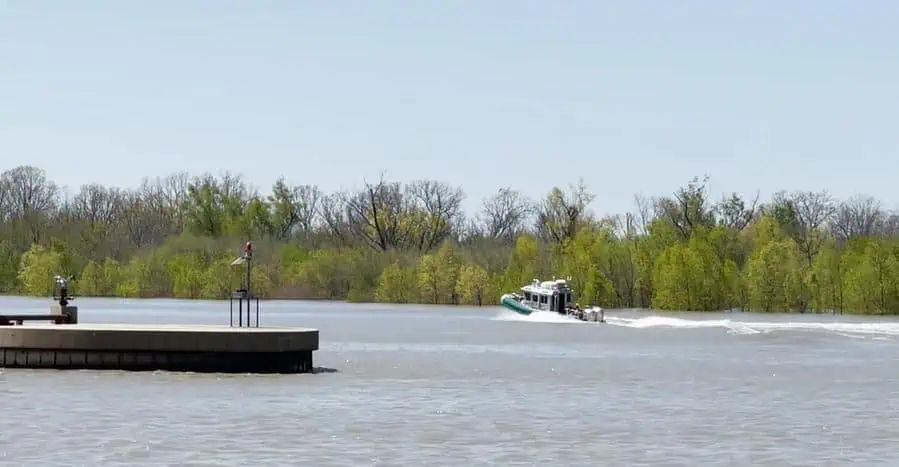Story (below) taken from Army.Mil, by Carol Coleman.
Over the past year, U.S. Army Engineer Research and Development Center (ERDC) researchers have collaborated with Boston-based Sea Machines to create a system that will give surveyors the ability to conduct survey missions with a limited crew during emergencies — like the recent COVID-19 pandemic — or in post-disaster areas where it’s not safe to send a manned vessel.
“We converted one of our survey vessels into a semi-autonomous vessel” said David Nguyen, a research civil engineer with the ERDC’s Coastal and Hydraulics Laboratory. “You can have one person on the vessel to run the survey, create the mission plan and complete the mission.”
During the commissioning of the vessel on April 1, 2021, the team worked on final calibrations and tuning the motor and rudder sensors. “We planned some pretty crazy missions going back and forth on the same line at high speeds,” he said. “We did actual survey lines — like a traditional survey would include.”
The ERDC team has worked closely with the professionals at Sea Machines to convert the company’s ocean-going system to one used inland. “As of right now, it’s working pretty well, but there is still a lot of work with vessel behavior,” said Nguyen.
Nguyen hopes to eventually add more sensors to the vessel to increase its object detection for avoidance capabilities. “Right now, it can pick up larger vessels all the way down to a jon boat,” he said. “We want it to pick up floating logs ― a kayaker, possibly — or somebody swimming in the water.”
A part of the USACE civil works Navigation Systems Research Program, the team hopes that this technology will improve the organization’s resiliency and readiness in support of the program’s mission to provide safe, reliable, efficient, effective and environmentally sustainable waterborne transportation systems.
“We are the Corps of Engineers, and we are responsible for all the inland navigation channels and keeping them open,” said Nguyen. “It’s very important to complete these condition surveys and keep these channels open for the shipping industry. This would be a tool that the surveyors can use to produce those surveys.”
In the future, Nguyen would like to see this technology used on a regular basis. “We could possibly have this vessel docked somewhere and have preplanned missions where it just goes out and collects the survey and sends the processed survey back to the surveyor, so they can do quality assurance/quality control of the product, before sending them out,” he said.
“This would be beneficial to improve resiliency and efficiency,” he continued. “This could also be used as a force multiplier; this vessel is capable of preforming collaborative follow mode. You can do twice as much surveying in the same amount of time.”
*The appearance of U.S. Department of Defense (DoD) visual information does not imply or constitute DoD endorsement.














